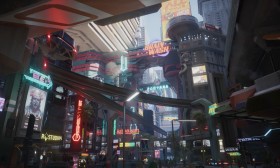Gran Turismo 7 Score: Simulation Depth and Content Reviews
Since its debut in 1997, the Gran Turismo series has been synonymous with automotive realism, pushing the boundaries of what a racing simulator can achieve. With Gran Turismo 7 (GT7), Polyphony Digital aimed to deliver not just a game, but a comprehensive love letter to car culture, blending meticulous simulation with an expansive content offering. This review delves into the game’s simulation depth, content richness, and overall execution, evaluating whether it lives up to its lofty ambitions.
Simulation Depth: The Heart of the Experience
At its core, Gran Turismo 7 is a simulator, and it excels in delivering an authentically nuanced driving experience. The game leverages the power of the PlayStation 5 (and to a lesser extent, the PS4) to create a level of tactile feedback and environmental interaction that sets a new benchmark for the genre.
Physics and Handling Model The physics engine in GT7 is nothing short of phenomenal. Each car feels distinct, with weight transfer, tire grip, and suspension behavior reacting convincingly to player input and track conditions. The difference between a lightweight, nimble Mazda MX-5 and a heavyweight, powerful Nissan GT-R is palpable. The game introduces a new element of realism with its advanced tire model, which accounts for temperature, wear, and even different compounds. This forces players to think strategically about pit stops and driving style during longer races.
The integration of the DualSense controller on PS5 elevates the experience significantly. Haptic feedback communicates subtle road textures, curb vibrations, and loss of traction, while adaptive triggers simulate brake pressure and throttle resistance. For those with a dedicated racing wheel, the level of immersion is even greater, offering precise control that rewards skill and practice.
Dynamic Weather and Time of Day GT7’s dynamic weather and time-of-day transitions are not just visual flourishes; they profoundly impact gameplay. A dry track gradually becoming damp requires a shift to intermediate tires, while a full downpour demands wets. The racing line evolves as puddles form, and visibility decreases, adding layers of challenge and realism. Racing through day into night at circuits like the Nürburgring Nordschleife is a breathtaking and demanding experience, highlighting the game’s technical prowess.
Sound Design The audio engineering deserves special mention. Engine notes are meticulously reproduced, from the high-revving scream of a Japanese supercar to the low rumble of a classic American muscle car. The sound changes based on camera perspective, and the Doppler effect as cars pass by adds to the authenticity.
Content: A Wealth of Options, with Some Caveats
Content has always been a cornerstone of Gran Turismo, and GT7 offers a massive amount of material to explore, though its structure has sparked some debate.
Single-Player Campaign: The GT Café The primary single-player mode is the GT Café, a guided tour through car culture led by a mysterious patron known as Luca. Players complete "Menu Books," which are sets of races and challenges focused on specific car genres or themes (e.g., Japanese FF cars, Porsche legends). This structure is effective for introducing players to a wide variety of vehicles and history, acting as an engaging digital car museum.
However, the Café’s linearity can feel restrictive. Veteran players might find the pacing slow, as it gates progress behind specific car collections rather than pure racing merit. Once completed, the single-player content transitions to traditional events like Championship Series and Missions, which offer substantial depth and challenge.
Car and Track Roster The car list, featuring over 400 vehicles at launch, is impressive, spanning classic icons, modern hypercars, and vision Gran Turismo concepts. The level of detail in each model—inside and out—is staggering. The track selection is also robust, including beloved classics like Deep Forest Raceway and Trial Mountain, alongside real-world circuits such as Spa-Francorchamps and Mount Panorama.
That said, some fans have expressed a desire for more new original circuits, as many are carried over from previous titles. Post-launch updates have steadily added both cars and tracks, showing Polyphony’s commitment to long-term support.
Economy and Progression GT7’s in-game economy has been a point of contention. While credits can be earned through races, the rewards for standard events can feel grindy, especially when aiming for multi-million-credit legendary cars. This design seemingly encourages microtransactions, though it is possible to earn everything through gameplay—it just requires significant time investment. This aspect has drawn criticism from players who prefer a more straightforward progression system.
Multiplayer and Sport Mode The online Sport Mode is the hub for competitive racing. It features daily races with regulated car and tuning parameters, promoting balanced competition. The ranking and sportsmanship rating systems work well to match players of similar skill, leading to thrilling and clean races—when the matchmaking is optimal. However, the penalty system for track limits and collisions, while improved, can still be inconsistent at times.
Scapes and Music Rally Beyond racing, GT7 offers creative outlets. Scapes is a stunning photo mode with thousands of real-world locations to showcase your cars. Music Rally is a unique, rhythm-based time trial mode where you drive to extend time set to music. While a fun diversion, it feels more like a tech demo than a core feature.
Visuals and Presentation
GT7 is arguably the best-looking racing game ever made. On PS5, it runs at a native 4K resolution with a smooth 60fps, and ray tracing is employed in specific modes like replays and scapes, creating breathtakingly realistic reflections and lighting. The attention to detail—from the way sunlight filters through trees to the individual water droplets on the windshield during rain—is extraordinary.
Conclusion: A Masterful Sim with Minor Pit Stops
Gran Turismo 7 is a triumphant return to form for the series. Its simulation depth is unparalleled on consoles, offering a driving experience that is both accessible to newcomers and deeply rewarding for purists. The wealth of content, from the educational GT Café to the intense Sport Mode, provides hundreds of hours of engagement.
It is not without its flaws. The structured—and at times slow—single-player progression and the grindy economy may frustrate some players. Yet, these are relatively minor issues in the context of the overall package.
For anyone passionate about cars and racing, Gran Turismo 7 is an essential experience. It successfully captures the beauty, engineering, and thrill of automotive culture, solidifying its place as a landmark title in the simulation racing genre. It doesn’t just simulate driving; it simulates a passion.















